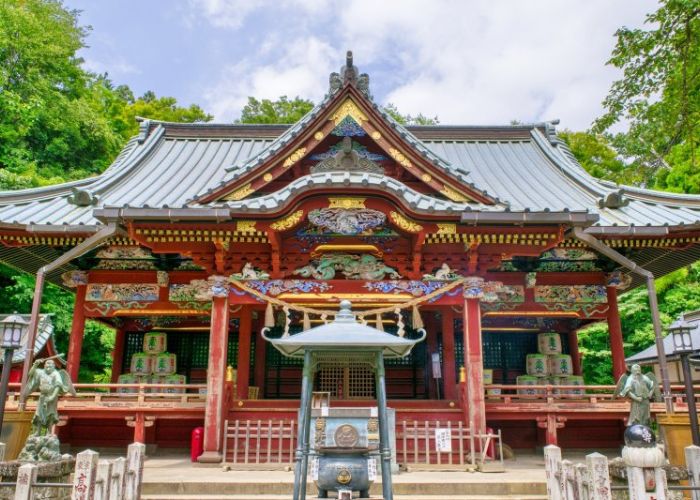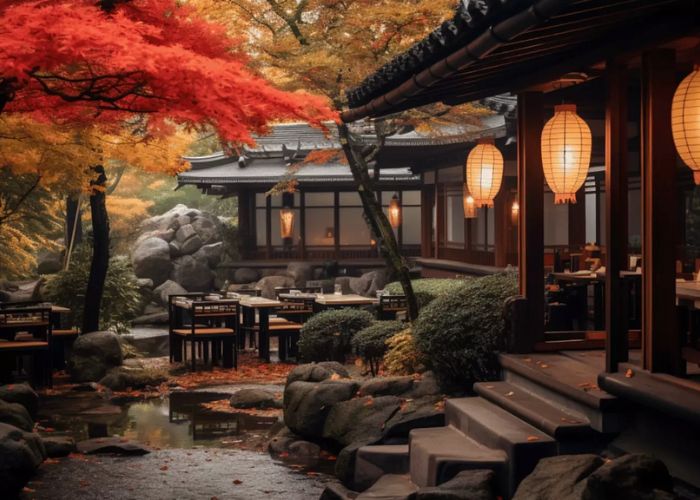For more than seven years, I’ve been writing about travel in Asia, and I’ve seen firsthand how quickly Chinese tourists are flocking to the area. While big places like Tokyo still get a fair share of visitors from China, there has been an interesting shift in recent years toward smaller, less well-known towns and cities. Read below about “The Hidden Gems Chinese Tourists Are Choosing Over Tokyo”.
Talking to Chinese tourists and tourism businesses, I’ve learned that a lot of them are looking for “hidden gem” places that are less crowded with tourists and offer a more authentic experience than the big cities that are now flooded with tourists. As someone who loves to learn about other cultures, I’m excited about this trend and the chance it gives for eco-friendly tourism.
This piece is about four hidden gems in Japan that more and more Chinese tourists are choosing over Tokyo’s bright lights. These places, ranging from quiet mountain towns to cute port cities, give you a taste of traditional Japan without the huge crowds.
Table of Contents
Takayama: Step Back in Time in the Japanese Alps
High up in the Japan Alps in the Hida Mountains, Takayama has kept its native charm even though most of the country quickly became modernized after WWII. Many of the craft shops, bars, sake breweries, and buildings in Old Town were built more than 300 years ago and have been beautifully restored. It feels like you’re back in old Japan as you walk down the narrow streets past wooden buildings and people selling things in kimonos.
I will always remember randomly walking into a small, family-run sake brewery. The friendly brewer gave me a tour and a taste without being asked. Watching him use traditional methods that have been passed down from generation to generation was like looking into the past. If you go outside of Takayama’s old town, you’ll find hiking trails, waterfalls, and towns with hot springs.
Takayama has become more famous with tourists from other countries over the past ten years, but Chinese tourists still don’t know much about it. But that looks like it’s changing now. When I went there last, I enjoyed talking with a few groups of Chinese tourists who were exploring the narrow streets and craft shops. If this trend keeps up, Takayama will gain a lot from showing this new wave of tourists its culture and customs.
Kanazawa: Artisanship and Cuisine Where Geishas Once Walked
Kanazawa is on the northern coast of Japan, facing the Sea of Japan. The city was hardly damaged by WWII bombings, so it has kept a lot of its feudal-era building and layout. In the Higashi Chaya old geisha area, the winding streets used to be home to many geishas who entertained wealthy clients. These days, they are home to teahouses and craft shops.
But what really draws people to Kanazawa is its long history of craftspeople making some of Japan’s best pottery, lacquerware, silk dyed goods, gold leaf goods, and gourmet seafood. Kanawa has the second most Michelin stars of any city in Japan, after Tokyo. It is thought to be one of the best places to eat in Japan.
But, strangely, I haven’t met many Chinese tourists in all the times I’ve been to Kanazawa. Many Chinese tourists go to Kyoto to learn about Japan’s history, but not as many go to the north coast of Japan, which is often forgotten. Custom tour companies say that more and more people want to go to Kanazawa because it has a great mix of culture, shopping, and food.
Matsue: Quaint Canals and Castles in Shimane Prefecture

The name Shimane Prefecture probably doesn’t mean much to people who have been to Japan many times. Since Shimane is in the less-visited Chugoku area, it doesn’t get many foreign tourists. But that makes places like Matsue even more appealing.
People who live in Matsue are happy that their town has been called “Little Kyoto of the San’in region.” It was built around pretty canals the size of cars. In the middle of downtown is Matsue Castle, one of Japan’s few remaining castles from the Middle Ages. It is surrounded by a large park with well-kept grounds and a tea house. It’s like going back in time to walk along the lake and see small wooden boats carrying goods.
In addition to the major attractions, I loved exploring the quaint neighborhoods, such as Shiomi Nawate Street, which has well-preserved wooden merchant houses and restaurants that serve seafood from the area. Walking down Japan’s quiet streets, free of tourists, is a great way to relax after visiting places that are always too busy.
As Chinese tourism grows beyond the well-trodden paths, tour companies say there is more demand for packages to Shimane and other less-visited places like Matsue that are historically important. Matsue is sure to get more Chinese tourists because it gives such a real picture of medieval Japan in such a peaceful setting.
Hagi: Samurai History By the Sea
The last secret gem I want to share is in the castle town of Hagi in Yamaguchi Prefecture, which is on the rough coast of the Sea of Japan. Hagi is linked to the rebellious samurai movement because it was a hub for the revolts that brought down the Tokugawa Shogunate in the middle of the 1800s.
You can picture soldiers marching past the gates as you walk through the well-preserved Samurai District, which is surrounded by high walls. The beautiful 17th-century Hagi Castle is the town’s symbol. It sits on top of Mount Shizuki and has a wide view of the bay below. The two-story wooden Jokamachi merchant house area also takes you back in time by walking past warehouses and homes with clay walls.
In addition to its past, Hagi is surrounded by beautiful scenery along the Sea of Japan, with fishing villages and hot springs. Local food, like the famous Hagi Mackerel, shows off the fresh fish that comes from the area’s waters.
People in Japan love Hagi because it was so important to the revolution, but tourists from other countries have been slow to find this beautiful town. However, Chinese tour operators say that trips from China that focus on Japan’s samurai history have a lot of promise here. Some groups of Chinese tourists are already here visiting Hagi’s famous sites.
A Look Ahead: Green Tourism to Unknown Gems
China’s growing interest in Japan’s less well-known tourist spots is a good sign, but it also makes people worry about the long-term effects of tourism. I’ve seen firsthand how terrible overtourism can be from Kyoto to Bangkok, and the thought of hordes of tourists ruining these places’ real beauty keeps me up at night.
To keep heritage sites and culture alive while also getting a lot of money from tourists, it’s important for local governments to put in place strict rules. Controlling the number of tourists by setting limits on group sizes and activities and teaching them how to travel responsibly can make a huge difference.
Conclusion
I’m optimistic about the future because I’ve seen younger Chinese people become more careful about how they move. They go out of their way to find places that aren’t too popular so that their tourism can help small towns. Since my job is to promote eco-friendly travel options, I can’t wait to go back to these interesting secret gems and record how they change over time.
When you plan your own trip to Japan, please don’t just visit the crowded Tokyo towers and Kyoto shrines. Visit the Japan Alps in the north, walk around the charming cities of Kanazawa and Matsue, and learn about Hagi’s warrior past. If you want to experience Japan’s fascinating past and culture, don’t follow the crowds; instead, take the road less traveled. I hope you like reading “The Hidden Gems Chinese Tourists Are Choosing Over Tokyo”.

Jamal is the knowledgeable voice behind EDB Travel, bringing over 4 years of experience in travel writing and destination expertise. Holding a degree in Tourism Management, Jamal specializes in showcasing Jamaica’s rich culture, vibrant attractions, and hidden gems. His extensive background and local insights provide readers with valuable tips and in-depth guides to explore Jamaica like a pro. Follow Jamal on Pinterest and Instagram for the latest travel inspirations and updates.

